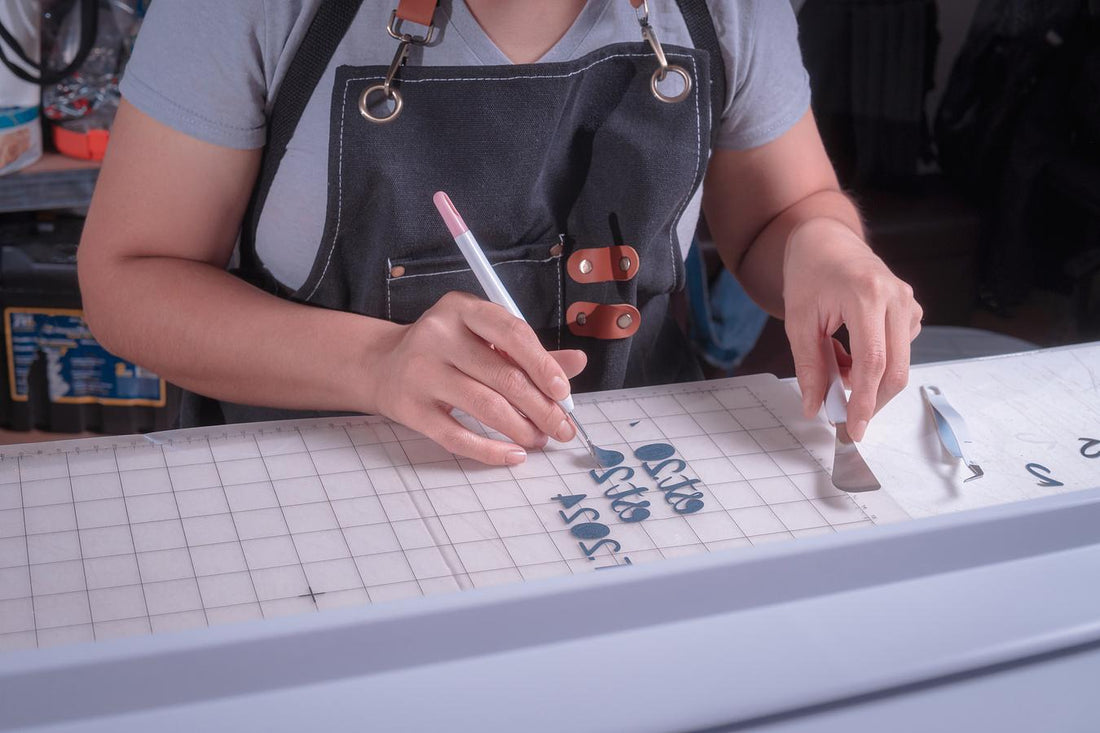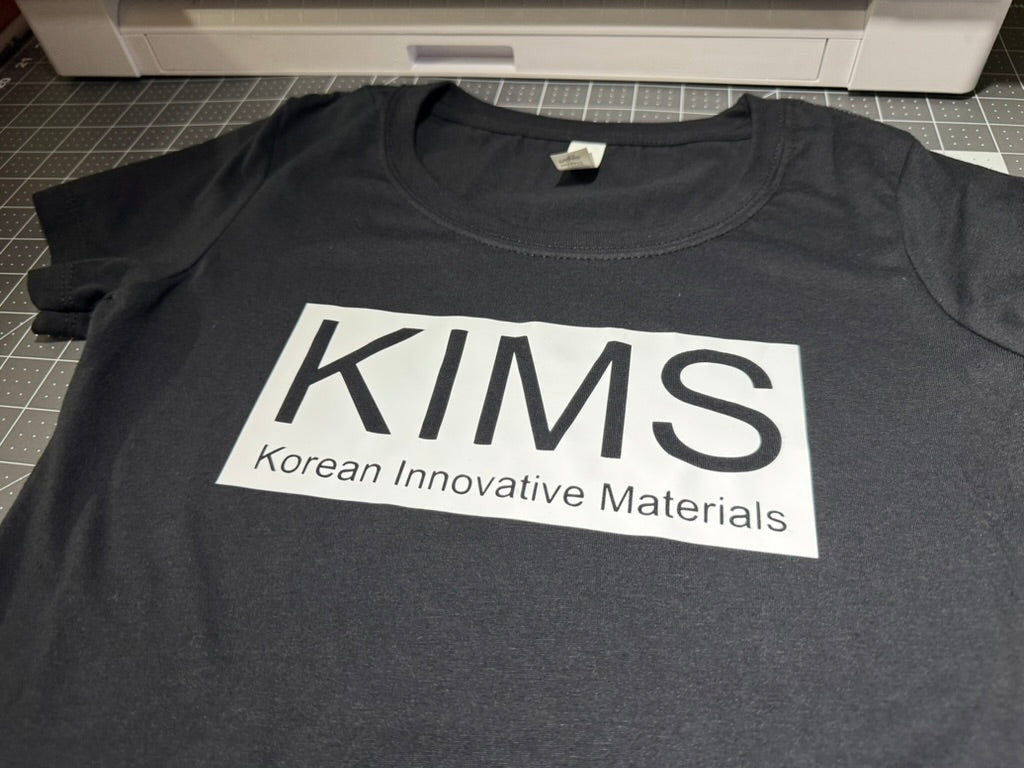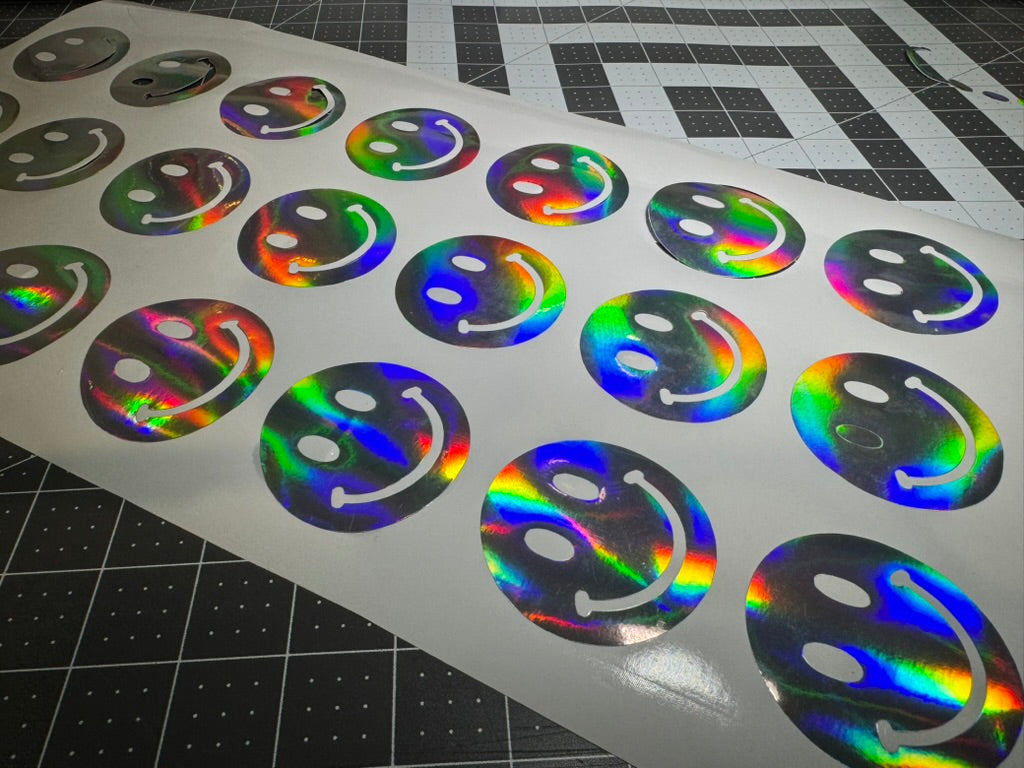Introduction
Heat transfer vinyl (HTV) is a special material that adheres to fabric when heat and pressure are applied. For t-shirts specifically, choosing the right HTV makes all the difference in how your design looks and lasts. With so many options available in 2025, finding the best heat transfer vinyl for your project can feel overwhelming.
This guide explains what makes certain vinyl better for t-shirts, which brands perform well on different fabrics, and how to get professional results. Whether you're creating custom shirts for the first time or looking to upgrade your materials, understanding these basics will help you make better choices.
Why Choosing the Right Heat Transfer Vinyl Matters
The quality of your heat transfer vinyl directly impacts how your design looks on a t-shirt and how long it lasts. High-quality HTV creates crisp lines, vibrant colors, and withstands multiple washes without peeling or fading.
Different fabrics require different types of vinyl. Cotton t-shirts work well with standard HTV, while stretchy performance fabrics need more flexible vinyl that moves with the material. Using the wrong type can lead to cracking or peeling after just a few wears or washes.
The best htv also affects your production process. Good vinyl cuts cleanly, weeds easily (removing excess material), and transfers consistently. This saves time and reduces waste, especially important when making multiple shirts.
![Image: Comparison of high-quality HTV vs. budget HTV after 20 washes]
Key Features of the Best Heat Transfer Vinyl for T-Shirts
When shopping for heat transfer vinyl for t-shirts, focus on these important qualities:
1. Adhesive Quality and Washability
The adhesive layer determines how well the vinyl sticks to fabric through repeated washing. Premium vinyl uses commercial-grade adhesives that form strong bonds with the fabric fibers.
Look for vinyl rated for at least 50 wash cycles if you want designs that last. Budget options might begin peeling after just 10-15 washes, especially in hot water or high heat dryers.
Testing tip: Before committing to a large project, wash a test shirt 5-10 times to see how the vinyl holds up.
2. Stretch and Flexibility for Comfortable Wear
Good heat transfer vinyl moves with the fabric instead of feeling stiff or plastic-like. This makes the shirt more comfortable to wear and prevents the design from cracking when stretched.
The best vinyl for iron on projects has a soft hand feel that blends with the fabric. When choosing vinyl for athletic wear or fitted shirts, look specifically for "stretch" formulations designed for performance fabrics.
3. Thickness and Durability Considerations
Vinyl thickness affects both how the design feels and how well it holds up over time:
-
Thin vinyl (80-90 microns): Best for detailed designs and lightweight shirts
-
Medium vinyl (100-120 microns): Good all-purpose thickness for most t-shirts
-
Thick vinyl (130+ microns): Ideal for work shirts or items that need extra durability
Thinner vinyl feels softer on the shirt but may not last as long. Thicker vinyl is more durable but can feel heavy or stiff if used on lightweight shirts.
4. Ease of Weeding and Layering
Weeding (removing excess vinyl after cutting) can be time-consuming with detailed designs. The best htv for shirts has a sticky carrier sheet that holds small pieces in place while you weed.
For multi-color designs, look for vinyl that can be layered without excessive bulk. Some premium vinyl types are specifically formulated for layering, with thinner profiles and adhesives that bond well with other vinyl layers.
Which Vinyl Is Best for Cotton Blends and Performance Fabrics
Different t-shirt materials need different types of heat transfer vinyl for best results. This table shows the best matches:
|
Fabric Type |
Recommended Vinyl |
Why It Works |
|---|---|---|
|
100% Cotton |
Siser EasyWeed, Cricut Everyday |
Strong adhesion to natural fibers, withstands standard washing |
|
Cotton/Poly Blends |
Siser Stretch, KIMS Direct Premium |
Balances flexibility with durability for mixed fabrics |
|
Performance Polyester |
Stahls' Premium Plus, Siser EasyWeed Stretch |
Stretches with fabric, resists heat damage during application |
|
Tri-blends |
KIMS Direct Premium, Siser EasyWeed |
Conforms to varied textures in blended fabrics |
When applying heat transfer vinyl to t-shirts, temperature settings matter too. Cotton can handle higher heat (305°F for 10-15 seconds), while polyester needs lower temperatures (280-290°F) to prevent scorching or yellowing.
Always pre-press your shirt for 3-5 seconds before applying vinyl. This removes moisture and creates a smooth surface for better adhesion.
Top Brands and Innovative HTV Options for 2025
1. Established Leaders: Siser, Cricut, and Stahls'
Siser EasyWeed remains the industry standard in 2025, known for consistent quality and reliability. It cuts cleanly, weeds easily, and works well on most t-shirt fabrics. Available in over 50 colors, it's the best htv for beginners and professionals alike.
Cricut Everyday Iron-On works exceptionally well with Cricut cutting machines. Its StrongBond Guarantee promises durability through 50+ washes when applied correctly. The color selection is more limited than Siser but includes popular basics.
Stahls' Premium Plus is favored for commercial production and athletic wear. It applies at lower temperatures than other brands, making it safer for heat-sensitive synthetic fabrics. While more expensive, its durability makes it cost-effective for high-use garments.
2. Emerging Brands and Specialty Vinyl Lines
Several newer brands offer good heat transfer vinyl at competitive prices. These often include specialty finishes like holographic, color-shifting, or textured effects not available from traditional manufacturers.
When trying a new brand, start with a small order to test quality. Check reviews specifically mentioning wash durability and ease of cutting detailed designs, as these are areas where budget brands sometimes fall short.
3. KIMS Direct Premium Vinyl Collection
KIMS Direct offers heat transfer vinyl engineered for consistent results across various fabric types. Their premium line features enhanced adhesives that bond strongly with both natural and synthetic fibers.
What sets this vinyl apart is its balance of flexibility and durability. The vinyl stretches with the fabric while maintaining color vibrancy through repeated washing. Their carrier sheets are designed for easy weeding of intricate designs, making them a good option for detailed work.
Tips for Cutting, Weeding, and Applying HTV on Shirts
1. Proper Blade Settings and Test Cuts
Before cutting your design, always do a test cut on a small piece of vinyl. This helps you find the right blade depth and pressure settings for clean cuts without cutting through the carrier sheet.
Starting settings for popular machines:
-
Cricut Explore/Maker: Iron-On setting, standard pressure
-
Silhouette Cameo: Blade depth 2-3, speed 6-8, force 10-12
-
Brother ScanNCut: Blade depth 2, pressure 1
If your cuts aren't complete or the vinyl is hard to weed, increase pressure slightly. If the blade cuts through the carrier sheet, reduce depth or pressure.
2. Weeding Techniques for Clean Results
Weeding removes the vinyl you don't want transferred to your shirt. For best results:
-
Use good lighting to see cut lines clearly
-
Start from a corner and pull slowly
-
Use a weeding tool with a sharp point for small details
-
Work from the outside in for complex designs
For very detailed designs, try using a light box underneath your vinyl to make cut lines more visible. This makes htv on shirts with fine details much easier to prepare.
3. Perfect Temperature and Pressure for Different Vinyls
Each vinyl type needs specific heat press settings:
|
Vinyl Type |
Temperature |
Time |
Pressure |
Peel Type |
|---|---|---|---|---|
|
Siser EasyWeed |
305°F |
10-15 sec |
Medium |
Hot or Cold |
|
Cricut Iron-On |
315°F |
30 sec |
Medium |
Cold |
|
Stahls' Premium |
280-300°F |
8-12 sec |
Medium |
Hot |
|
KIMS Direct |
305°F |
12-15 sec |
Medium |
Cold |
Always follow the manufacturer's instructions for your specific vinyl. Using a heat press gives more consistent results than a household iron because it provides even heat and pressure.
Specialty Finishes That Boost Your T-Shirt Designs
1. Glitter and Metallic Effects
Glitter and metallic heat transfer vinyl add sparkle and shine to t-shirts. These specialty finishes contain reflective particles that catch the light, creating eye-catching effects.
When working with glitter HTV:
-
Use slightly higher pressure during application
-
Allow the vinyl to cool completely before peeling
-
Wash inside-out to preserve the glitter effect longer
Glitter and metallic vinyl works best for larger design elements rather than fine details, as the particles can make precise cutting challenging.
2. Reflective and Color-Shifting Vinyl
Reflective HTV contains tiny glass beads that reflect light, making designs visible in low light conditions. This is perfect for safety wear or athletic clothing worn at night.
Color-shifting vinyl changes appearance depending on viewing angle or temperature. Some types transform when exposed to sunlight (UV-reactive) or body heat (thermochromic).
These specialty vinyls typically cost more but create unique effects impossible to achieve with standard vinyl.
3. Puff and Dimensional Effects
Puff vinyl expands when heated, creating a raised, 3D effect on your t-shirt designs. This adds texture and visual interest, especially for text and logos.
When applying puff vinyl:
-
Use slightly higher temperature than standard vinyl
-
Don't press too long or the effect will flatten
-
Avoid layering with other vinyl types
Dimensional effects work best for bold designs rather than intricate details, as the expansion can cause small elements to lose definition.
Finding the Best Heat Transfer Vinyl for Your Specific Needs
The best heat transfer vinyl for your t-shirt project depends on several factors. Consider what you're making, who will wear it, and how it will be used.
For everyday t-shirts that will be frequently washed, choose durable vinyl with strong adhesive properties. For athletic wear or stretchy shirts, prioritize flexibility and stretch. For special occasion shirts, specialty finishes like glitter or metallic might be worth the extra cost.
Your equipment also matters. Some vinyl works better with certain cutting machines. Check compatibility before purchasing, especially for detailed designs that require precise cutting.
Budget plays a role too. While premium vinyl costs more initially, it often saves money in the long run through less waste, fewer failed transfers, and longer-lasting results. For beginners, starting with a high-quality standard vinyl like Siser EasyWeed or Cricut Everyday Iron-On provides a good learning experience.
For a wide selection of heat transfer vinyl options for your t-shirt projects, visit KIMS Direct.
FAQs About Heat Transfer Vinyl
What is the best heat transfer vinyl for detailed designs with fine lines?
Thin, high-quality vinyl like Siser EasyWeed or KIMS Direct Premium works best for intricate designs because they cut cleanly and hold small details during transfer.
How does premium heat transfer vinyl compare to budget options in durability?
Premium vinyl typically lasts through 50+ washes without peeling or fading, while budget options may show wear after 10-20 washes under the same conditions.
Which heat transfer vinyl works best for stretchy athletic fabrics?
Specialty "stretch" vinyl like Siser EasyWeed Stretch or Stahls' Premium Plus is designed specifically for high-stretch fabrics and prevents cracking during movement.
Can I layer different brands of heat transfer vinyl together?
Yes, different brands can be layered, but test compatibility first as adhesives and application temperatures vary between manufacturers.
How do I prevent heat transfer vinyl from peeling after washing?
Use the correct temperature, pressure, and time when applying the vinyl, and follow care instructions like washing inside-out and avoiding fabric softeners.







